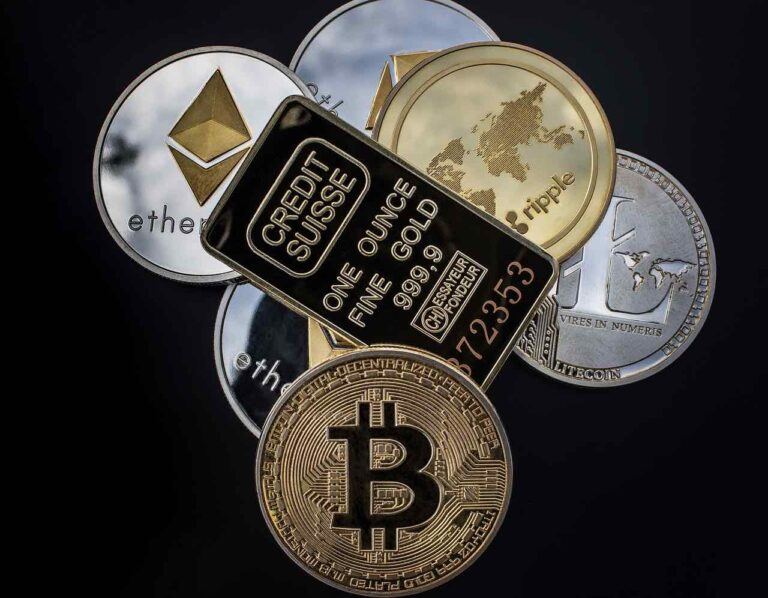This article provides an overview of how Bitcoin (BTC), Ethereum (ETH), XRP, and Chainlink (LINK) have been doing over the past 24-hour period, covers recent news that might have affected their prices (or might do so in the future), and looks at interesting tweets about these cryptoassets from prominent members of the crypto community.
To give you a rough idea of how well the crypto markets are doing today, 10 out of the top 20 cryptoassets (by market cap) are currently in the red (against the dollar).
All market data used in this article was taken from CryptoCompare around 15:50 UTC on 16 May 2020.
Bitcoin (BTC)
Bitcoin is currently trading at $9,355, which means that it is down 0.92% in the past 24-hour period:

According to data from CryptoCompare, since Halving Day (i.e. May 11), Bitcoin’s price has gone up from an intraday low of $8,488 on that day to $9,355, where it is now, which means an increase of 10.21%.
As for Bitcoin’s hash rate, per data from BitInfoCharts, although it reached an estimated high of 137.57 EH/s on Halving Day (prior to the halving event, which occurred around 19:23 UTC), since then, it has fallen to 101.90 EH/s, which means a decrease of 25.92%.

What this third having event means for miners is that the total block mining reward per day, i.e. the amount of new bitcoin minted each day, is now 900 BTC rather than 1800 BTC, which is probably why some miners who using inefficient hardware or not having access to super cheap electricity are being forced to stop their mining operations, which is why Bitcoin’s hash rate has gone down.
This mean we should expect an increase in Bitcoin’s mining difficulty (which is programmatically/automatically adjusted every 2,016 blocks, i.e. roughly every two weeks) on Monday (May 18), after which more miners will come, thereby boosting Bitcoin’s hash rate (although we don’t know how much higher it will go).
Bitcoin’s Halving Day was good for business at the CME Group, where 21,001 Bitcoin futures contracts (each BTC futures contract is equivalent to five bitcoins) and 380 option on Bitcoin Futures contracts were traded.

After Bitcoin’s third halving on Monday, the next most interesting Bitcoin-related news came on Friday (May 15). As CryptoGlobe reported yesterday, this is when one of the world’s most successful novelists, J.K. Rowling, who is the creator of the Harry Potter fantasy series, asked Coindesk reporter Leigh Cuen to explain to her what Bitcoin is.
Well, needless to say, not only Cuen replied to her, but so did pretty much everyone else in CryptoTwitter. Several hours and a huge number of explanations later, we found out from Rowling that her initially inquiry started as a joke (while she was in a slightly drunken state), and so not everyone in the community was pleased about being trolled by her. Rowling also admitted that she has a difficult time in general with technology, and that she had not really understood any of the explanations offered to her.
One of the funniest comments on CryptoTwitter’s response to Rowling’s question about Bitcoin came from one of the researchers at The Block:
How bitcoin twitter think they look explaining bitcoin to @jk_rowling vs. how they actually look. pic.twitter.com/pux83Fh8ih
— Steven (@Dogetoshi) May 15, 2020
Ethereum (ETH)
Ethereum is currently trading at $200.37, which means that it is up 1.38% in the past 24-hour period:

In the year-to-date period, Ethereum, the second-most valuable cryptoasset by market cap, has gone up from $128.91 to $200.37, which means an impressive 55.43% (against USD) increase in value.
Yesterday (May 15), Ethereum Foundation researcher Justin Drake said that Ethereum 2.0 could have been launched a year or two sooner had the team decided to make things easier for themselves, e.g. by going through fewer design iterations:
We made Eth2 hard for ourselves:
* many design iterations
* many community clients vs one EF-led client
* libp2p vs devp2p; BLS12-381 vs BN254We could have launched a year or two earlier the easy way. It was painful but it was right. Our investments will pay off for decades 🙂
— Justin Ðrake (@drakefjustin) May 15, 2020
When Drake was asked to give a few examples of the design decisions he was referring to, this was his reply:
Three big compounding improvements:
* (robustness) unifying PoS and sharding
* (scalability) committees and signature aggregation
* (usability) fewer shards with faster crosslinksNone of these were obvious at the time. Every time we simplified the design.
— Justin Ðrake (@drakefjustin) May 15, 2020
XRP
XRP is currently trading at $0.1987, which means that it is down 0.10% in the past 24-hour period:

In the year-to-date period, XRP, the fourth-most valuable cryptoasset by market cap, has gone up from $0.1927 to $0.1987, which means a 3.11% (against USD) increase in value, which does not sound too impressive until you consider that during the same period the S&P 500 has gone down 12.07%.
On Thursday (May 14), Emi Yoshikawa, Senior Director, Global Operations at Ripple, published a blog post titled “Applying the Disruptive Innovation Theory to Cross-Border Payments”.
Here is how she summarized the Disruptive Innovation Theory:
“In a nutshell, disruptive technologies enable a new value proposition to initially address unmet needs in a market, and eventually overtake a mainstream market through continuous improvements. In many cases, the disruptive technology initially is adopted in a smaller, niche market, where particular new attributes of the technology are highly valued by customers— even though the technology may not initially satisfy some of the attributes that the mainstream market needs.
“However, through rapid improvements, disruptive technology gradually starts to capture mainstream use cases, and even creates new demand by making the product or service accessible to a larger pool of users.”
Then, she said that this theory explains very nicely “what’s happening in the cross-border payments space at the present” since RippleNet—”a disruptive networking technology that is changing the way money moves”—is “literally shaking up the industry dynamics.”
Here is what she had to say about RippleNet, ODL, and XRP:
“When RippleNet initially emerged several years ago, a typical push-back received from large banks was that the network was not as large as SWIFT’s 10,000+ financial institutions and we saw less initial interest in adoption.
“On the other hand, adoption from payment providers or regional banks quickly increased due to the value placed on RippleNet’s speed, low-cost and transparency rather than the size of the network.
“More recently with the introduction of RippleNet’s On-Demand Liquidity service, which leverages the digital asset XRP to eliminate the need for pre-funding, financial institutions experience added benefits as the technology rapidly improves…
“While RippleNet was initially adopted in the remittance market, which is often neglected by large global banks who draw much higher revenue from corporate payments, the network is being adopted to address a wider range of use cases including small and medium size enterprises (SME) payments and is on the trajectory to further expand its addressable market.
“Early adopters of RippleNet enjoy the benefits of growing their business through expanded corridors and additional use cases. This phenomenon follows the disruptive innovation theory.”
Chainlink (LINK)
Chainlink’s LINK token is currently trading at $3.686, which means that it is down 1.23% in the past 24-hour period:

In the year-to-date period, Chainlink, the 12th most valuable cryptoasset by market cap, has gone up from $1.76 to $3.686, which means an incredible 109.43% (against USD) increase of value.
Yesterday (May 15), the team behind Cryptoraves, a decentralized Twitter tipping bot, announced an integration with Chainlink that will “enable Cryptoraves to remove a layer of centralization from its platform by employing Chainlink’s secure and reliable oracles to validate Twitter data.”
Using Chainlink’s oracles in this way also “solves the vexing regulatory issue of custody” as explained below:
“By offloading transaction data validation to Chainlink’s decentralized network, Cryptoraves drastically reduces its regulatory risk.
“This also enables Cryptoraves to add higher risk exchange-listed tokens such as ETH, DAI, or even LINK to their Twitter tipping platform.”
Featured Image by “WorldSpectrum” via Pixabay.com








